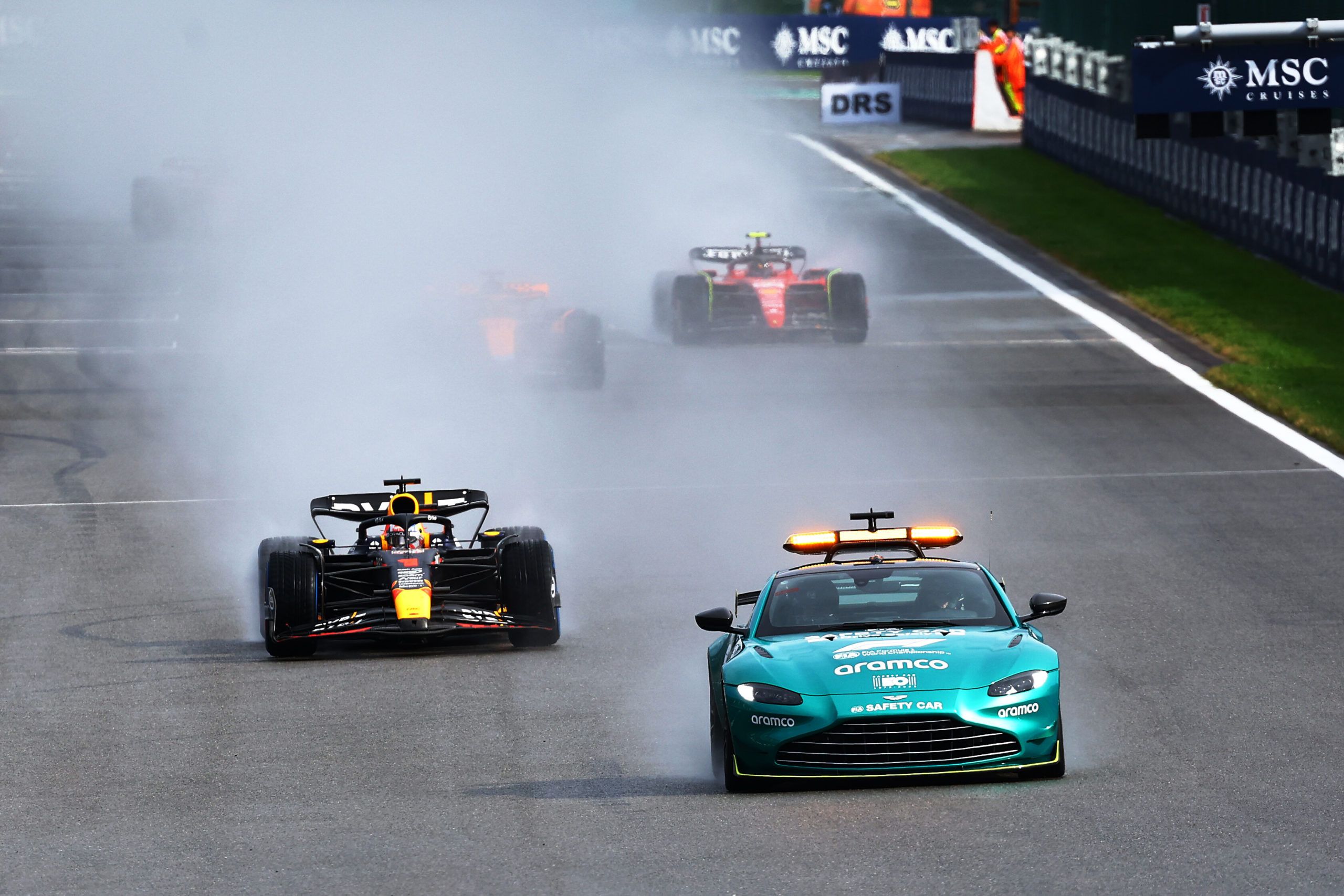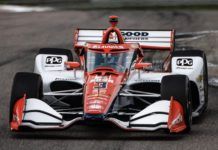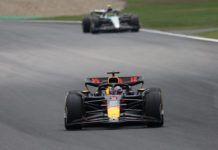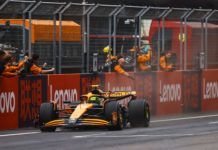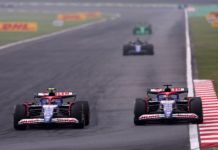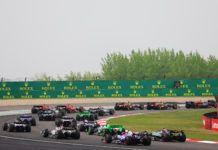Mario Isola spills on the discussion around a super-intermediate compound to replace the intermediate and wet Pirelli F1 tyres.
Amid the discussions around mudguards which is being tested in order to lessen the spray in wet conditions, Pirelli F1 chief Isola has spilled about a super-intermediate compound in place of intermediate and wet tyres, which is in use currently.
The debate around the use of the wet compound has always been around where most of the F1 drivers and teams have a common feeling of disappointment. Even in the recent Belgian GP weekend, they felt the wet compound was of little use for them.
Usually when there is high percentage of rain, the session is red-flagged. By the time they go back out, the track doesn’t take much time to dry out where the intermediate compound is far more essential. This pushed the idea of a super-intermediate compound.
“If, for the future, the idea is to stay with the current situation – that means, if there is a lot of water on the track then the red flag or safety car would be deployed and they are not going to run because of visibility – then, in my opinion, the best solution is probably to develop an intermediate tyre – let’s call it super-intermediate or intermediate+ – that is an intermediate that is more towards wet conditions, so we can cover with one product for the limit of what is acceptable visibility to the crossover with dry conditions,” said Isola.
“If the idea is to continue for a device that is able to reduce the spray and therefore give them the possibility to run in full wet conditions, we have to keep the two products, stay with the intermediate that we have now and the new intermediate that runs without blankets, and improve the full-wet tyre.
“But if the full wet tyre is used only behind the safety car, I agree with the drivers that, at the moment, it is a useless tyre,” summed up the Pirelli chief. This is only a possible solution to the wet compound problem and discussions have floated in the past.
It never got into a serious mode which is why the intermediate and wet compound has been there for so long. “We have to decide which is the direction we want to take for the future in order to develop the product that is needed for Formula 1,” said Isola. “We have now [got] an intermediate and a wet.
“In the past, yes, but then they started to test these new devices and so we stayed on the idea of keeping two different products. It is worth continuing to discuss this idea fort the future,” summed up Isola, who is also confused by the demands in terms of visibility. He reckons the wet conditions has always created visibility issue and it will continue to do so.
“I don’t know what they want,” continued the Pirelli chief. “Visibility is obviously something we cannot control because if you need to disperse water in order to avoid aquaplaning, the water has to go somewhere. We saw on Saturday at Spa with the intermediate tyre also, the visibility is not ideal, so that is not something new.
“I would say that visibility in wet conditions has been terrible since the 1950s. I remember when I was a kid and watching the races, visibility in rain conditions was always terrible. I don’t remember a race where visibility was good. Now, clearly, there is a different attention to safety compared to the past and because of this different attention, also, the race director is taking the decision based on this and not allowing them to run when the visibility is dangerous for them,” summed up Isola.
Here’s F1 finances for Q2
Here’s F1 team chiefs on mudguards
Here’s F1 Commission on latest decisions
Here’s news on F1 equalisation bid
Here’s FIA on cost cap breaches
Here’s F1 bosses on 2026 power unit regulations

